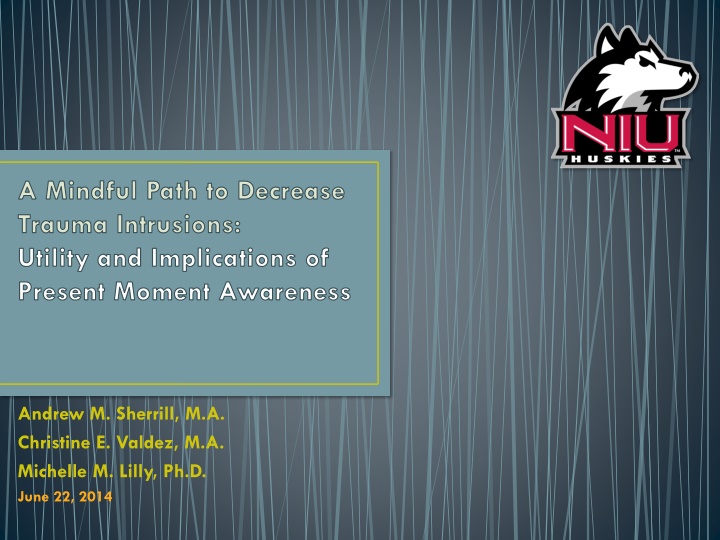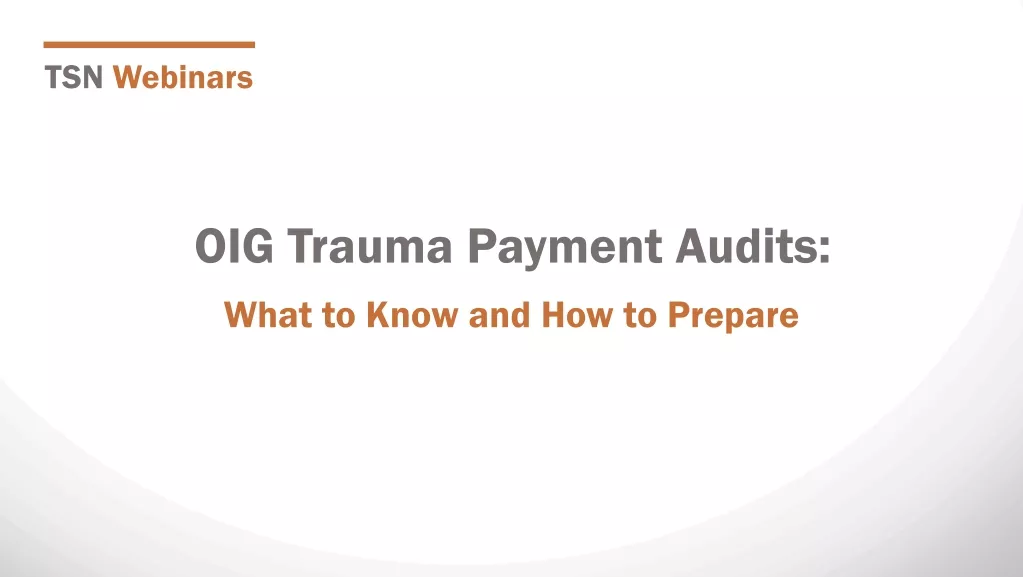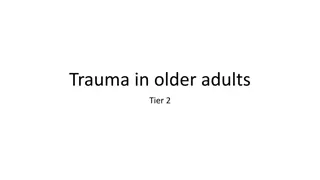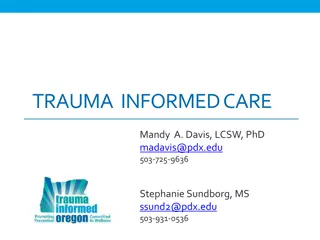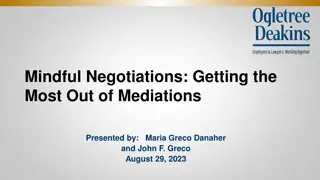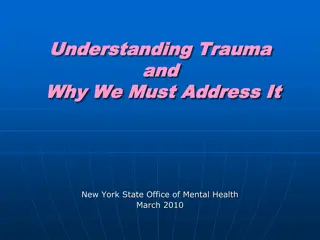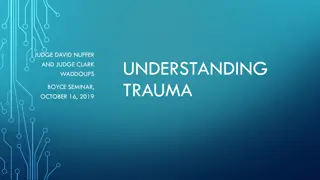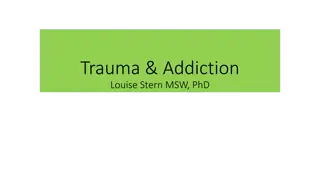Mindful Path to Decrease Trauma Intrusions
Utility and implications of present moment awareness and acceptance in mindfulness practices for reducing trauma intrusions. Explore the components of mindfulness, such as awareness of present experiences and acceptance of those experiences. Delve into the concept of present moment awareness in isolation and its potential impacts on psychological well-being. Uncover the importance of integrating various mindfulness processes for optimal outcomes.
Download Presentation

Please find below an Image/Link to download the presentation.
The content on the website is provided AS IS for your information and personal use only. It may not be sold, licensed, or shared on other websites without obtaining consent from the author.If you encounter any issues during the download, it is possible that the publisher has removed the file from their server.
You are allowed to download the files provided on this website for personal or commercial use, subject to the condition that they are used lawfully. All files are the property of their respective owners.
The content on the website is provided AS IS for your information and personal use only. It may not be sold, licensed, or shared on other websites without obtaining consent from the author.
E N D
Presentation Transcript
A Mindful Path to Decrease Trauma Intrusions: Utility and Implications of Present Moment Awareness Andrew M. Sherrill, M.A. Christine E. Valdez, M.A. Michelle M. Lilly, Ph.D. June 22, 2014
What is mindfulness? Two Components (Bishop et al., 2004) 1. Awareness of present experiences 2. Acceptance of present experiences Research question What happens when these two components are de-coupled?
Dismantling Mindfulness Mindfulness Processes Present Moment Awareness Acceptance Values Clarification Psychological Flexibility Committed Action Defusion Self-as-Context
Present Moment Awareness (PMA) Synonyms within Contextual Behavioral Science Contact with the Present Moment (Hayes et al., 1999) Self-as-Process (Foody et al., 2012) Definitions Shifting attention to what is happening here-and-now (Fletcher & Hayes, 2005) Discriminating features of the environment (Blackledge & Drake, 2013)
Present Moment Awareness in Isolation Empirical question When isolated from other mindfulness processes, is present moment aware- ness inert, or does it lead to desirable outcomes or iatrogenic outcomes? Desirable outcomes? Extrapolation of theory (Bishop et al., 2004; Blackledge & Drake, 2013; Hayes et al., 1999) Laboratory-based component studies Attention training (Sharpe et al., 2010) Breathing meditation (Arch & Craske, 2006; Feldman et al., 2010; McHugh et al., 2010) Mindfulness exercises (Broderick, 2005; Heppner et al., 2008; May et al., 2010; Sanders & Lam, 2010) Sensory-focused instructions (Burns, 2006; Cioffi & Holloway, 1993; Haythornthwaite et al., 2001; Logan et al., 1995; Michael & Burns, 2004) Iatrogenic outcomes?
Measuring Present Moment Awareness Self-report? Task demands Too much derivation (Blackledge & Drake, 2013) Yes, I was in the present a couple second ago. Protocol analysis? Analyzing spoken/written statements using a theoretical framework Objective indices of present moment awareness
Sensation-Shifting Coding Scheme Definition Flexibly observing the occurrence of internal stimuli (e.g., bodily sensations, thoughts, and feelings) and external stimuli (e.g., sounds, sights, and touch) Operationalization Frequency of verbally indicated shifts of attention across sensory modalities Example: The clock is ticking. My arms are cold. I have to go shopping tonight. My hands is cramping while I write. The clock is still ticking. Visual Thermal Cognitive Pain Visual PMA Index = #SensationShifts / #Clauses (Example = 0.8)
Study Design Sample (N = 40): Community-recruited female victims of physical and sexual assault Prone to experience unwanted private experiences Outcomes: Changes in Positive and Negative Affect (PANAS-X; Watson & Clark, 1999) Trauma Intrusions (Cacioppo et al., 1997) Protocol also used to code PMA Index with Sensation-Shifting Coding Scheme
Study Design (continued) Modes of Processing Conditions (Watkins et al., 2008) Read and concentrate on 30 scenarios Example: You have recently started a new job. Although you have tried very hard to be friendly and polite to your new colleagues, they do not make any effort to include you in conversation. Today you overhear them making arrangements to socialize after work, but they do not invite you along. Control condition: Default awareness (n = 20) Count the number of verbs Experimental condition: Mindful awareness (n = 20) Imagine in your mind as vividly and concretely as possible a movie of how this event unfolded No instruction to be aware of the present moment
Predictions Between Subjects IV Default Awareness Mindful Awareness Continuous IV PMA Index Three DVs Intrusion Frequency Change in Negative Affect Change in Positive Affect H0: PMA-alone is inert (no direct effect on outcomes) H1: PMA-alone leads to desirable outcomes H2: PMA-alone leads to iatrogenic outcomes Mindful awareness: PMA = Negative Affect PMA = Positive Affect PMA = Trauma Intrusions Default awareness: PMA = Negative Affect PMA = Positive Affect PMA = Trauma Intrusions
Qualitative Results: Sensation-Shifting Coding Scheme Code Example Frequency Cognitive-Emotional-Affective Ilove my brother so much. 2,073 Visual Thisroom is clean. 50 Pain My hands hurt from writing. 30 Chronoceptive Time is going by fast. 20 Interoceptive I need to pee. 16 Thermoceptive It s hot in here. 10 Auditory Thereis a lot of background noise. 9 Touch The floor is vibrating. 5 Proprioceptive This chair is uncomfortable. 4 Taste Mymouth tastes bad. 3 Equilibrioceptive N/A 0 Olfactory N/A 0
Multi-Method PMA Assessment LIWC: Linguistic Inquiry and Word Count (Pennebaker et al., 2001) Dictionary of 2000+ into 70+ categories Targeted category: Present-focused verbs (e.g., is, am, does, hear) Associated with mindfulness skills (Moore & Brody, 2009) Associated with trauma narratives (Jelinek et al., 2010) Convergence between PMA Indices Significant correlation: r(78) = .258, p = .021
Results Default awareness: PMA = Negative Affect [r(18) = .543, p = .013] PMA = Positive Affect [r(18) = -.399, p = .081] PMA = Trauma Intrusions [ = -.21, t(17) = -0.78, p = .448] Mindful awareness: PMA = PMA = Positive Affect [r(18) = .602, p = .006] PMA = Trauma Intrusions [ = -.58, t(17) = -2.24, p = .039] Negative Affect [r(18) = .065, p = .786]
Discussion State of current research Dismantling mindfulness: mechanistic and functional Different methods, different results Present-moment awareness: necessary-but-insufficient condition? Being present acceptance Unsuccessful avoidance can occur in the here-and-how Future research and methodological implications Mediational research Protocol analyses Sensation-shifting coding scheme Pennebaker s LIWC
Conclusion: Tattoo Advice Correction: It gets better
